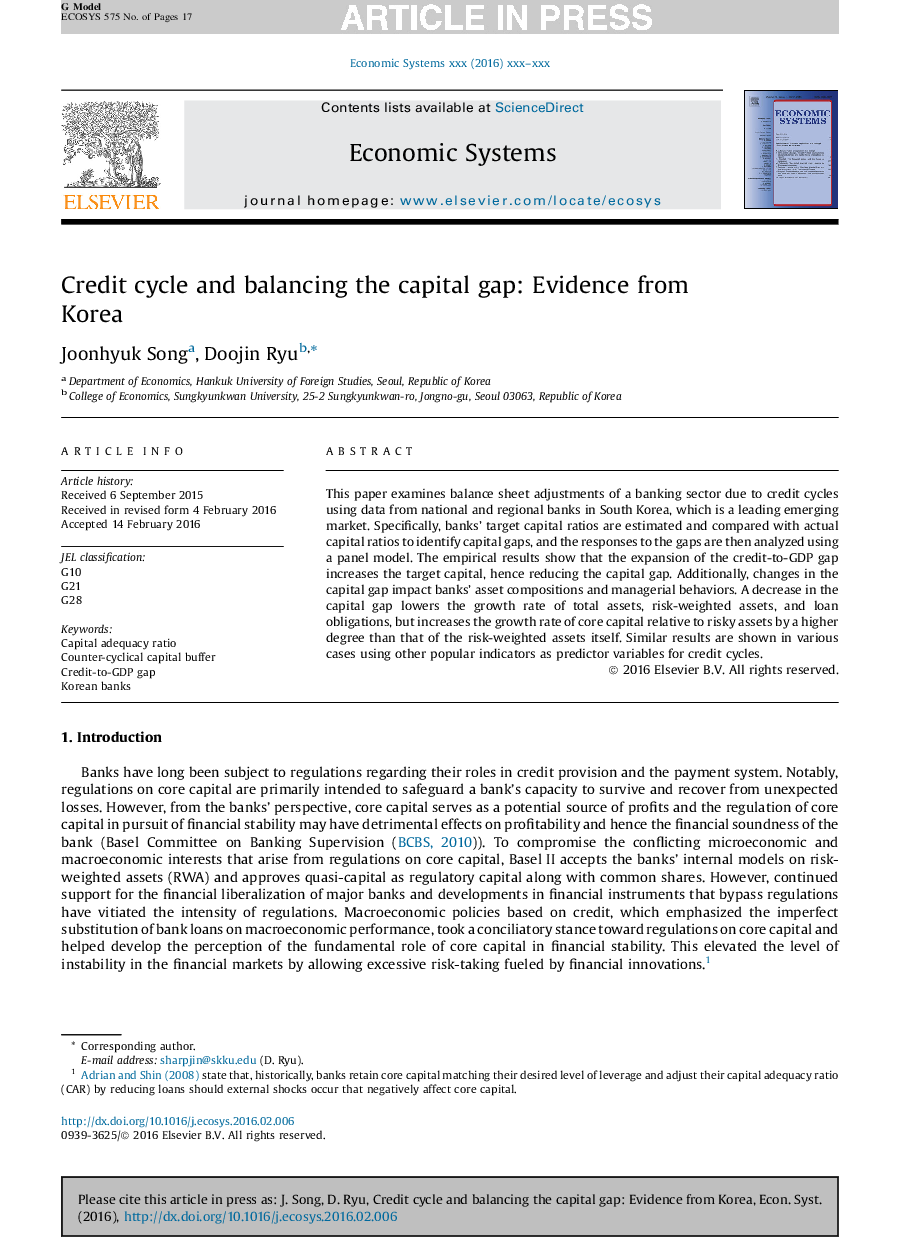| Article ID | Journal | Published Year | Pages | File Type |
|---|---|---|---|---|
| 5056239 | Economic Systems | 2016 | 17 Pages |
Abstract
This paper examines balance sheet adjustments of a banking sector due to credit cycles using data from national and regional banks in South Korea, which is a leading emerging market. Specifically, banks' target capital ratios are estimated and compared with actual capital ratios to identify capital gaps, and the responses to the gaps are then analyzed using a panel model. The empirical results show that the expansion of the credit-to-GDP gap increases the target capital, hence reducing the capital gap. Additionally, changes in the capital gap impact banks' asset compositions and managerial behaviors. A decrease in the capital gap lowers the growth rate of total assets, risk-weighted assets, and loan obligations, but increases the growth rate of core capital relative to risky assets by a higher degree than that of the risk-weighted assets itself. Similar results are shown in various cases using other popular indicators as predictor variables for credit cycles.
Related Topics
Social Sciences and Humanities
Economics, Econometrics and Finance
Economics and Econometrics
Authors
Joonhyuk Song, Doojin Ryu,
